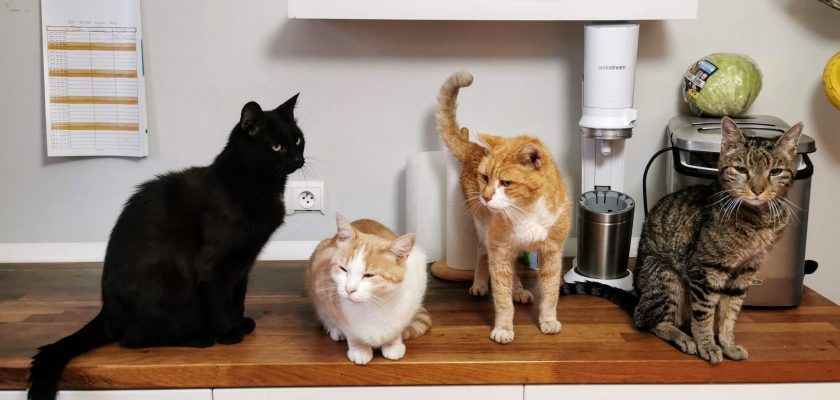Whether you are looking to adopt a new pet or you just want to know how to tell if your cat is male or female, you need to take into account the appearance of your cat. There are a few different factors you should take into consideration when determining if your pet is a male or female, including the shape of the snout and chest pads.
Male vs female snouts
A male and female cat can get along surprisingly well. The best way to glean this is to know which kitty is which. On the other hand, if you are lucky enough to have a male and female cat at your beck and call, you may have the whack-a-mole kind of fun. In any case, a cat is a cat and the best is usually the one that stays with you. After all, you are in charge of the family’s well-being, right? And while we’re at it, consider giving your pet a treat of the same caliber as yours. That’s not to mention, you can’t help but love a purring feline. Or so you’d like to think. Luckily, there’s a plethora of online cat grooming services that can keep you pampered pampered and petted in a posh environment, no strings attached.
Cheek pads
In addition to identifying the cat in question, it may also help you get a better grip on your stray kitty. Identifying the gender of your cat will allow you to get a more accurate handle on their needs and wants, and hopefully improve your relationship with them.

Photo by Amy Baugess on Unsplash
The best way to tell the gender of a cat is to check out its anatomy. This includes its snout, whiskers and nose, and will give you an idea of its overall size. Males will be larger than their female counterparts. They will also have thicker bone structures and cheek pads. Also, males will have a more aggressive disposition, resulting in hard bites and more frequent fights.
Aside from a snout, you can tell a cat’s true color from its tail. Females have smaller snouts, while males are usually longer. If you want to know how to tell cat gender by face, you might be interested in checking out the cheek pads of your new best friend.
There are some other cool tidbits to be found when looking for the gender of your cat, and the best way to find out is to learn about its characteristics. Thankfully, there are several guides online that will help you get the scoop. Among the best sources of information are veterinarians, animal shelters and pet supply stores. Another good resource is the online pet directory, which lists the breeds of cats, their ages and their corresponding price ranges. And finally, be sure to check out the most common feline diseases, as well as their treatment options. To get the most out of your furry companion, make sure to keep her healthy and happy. Remember to clean her litter box, and to feed her in a proper manner, and avoid any cat foods that contain cyanide or other toxic substances. Lastly, don’t forget to play with her and treat her to some fresh air! By knowing her gender, you’ll be able to take care of her in the most logical way.
Genitals
When you want to know how to tell cat gender, it is important to check the anatomical features of a cat. The two sexes have different faces, sizes and shapes. They also have differences in the shape of their genitals. Using these differences, you can tell what type of cat you have.
Using your cat’s face to determine its gender is one of the most reliable ways of determining sex. A male cat’s face has a larger forehead, jowls and cheek pads. On the other hand, a female’s face has narrower, sharper features. Besides facial traits, a cat’s coat color can also tell you if it is male or female. Generally, cats with darker coats are male.
In addition, a cat’s genitals can also be a good way to determine its sex. These organs can be seen when you sit with the cat on your lap or by scratching at the base of its tail. As kittens grow, their genitals become visible.

Photo by The Lucky Neko on Unsplash
Male cats have a penis located below their scrotum, a urinary tract opening and an anus. For a kitten, these organs are about an inch or two apart. During puberty, the distance between these genitals becomes larger.
Female cats have a vulva, an opening for the urinary tract and a slit-type organ. Compared to a male, the vulva is smaller and less stump-like. This is why a female may move her tail to the side to reveal her genitals.
While it is possible to tell a kitten’s sex, it is easier to do so in older cats. Kittens are very delicate and they have immature organs. If you have a stray cat, take it to a veterinarian for a professional exam. It is also better to keep the cat warm.
Genitals are the most accurate and reliable way to determine a cat’s sex. However, other methods can also be used. Some people use ear markings, coat color and routine behavior to determine a cat’s sex. Although these methods are not 100% accurate, they can sometimes be useful.
Tortoiseshell and calico cats are almost always female
The Tortoiseshell and Calico cats are a type of cat that has a white, black, and orange coat. They are also sometimes referred to as tortbies and torbies, and are considered good luck in many cultures. Known for their feisty personality, they love their owners with fierce loyalty. These cats are also called divas in the cat world.
Tortoiseshell and calico cats are mainly female. However, males can have the colors in their coat. Some have a patch of black fur, but otherwise they are completely orange.
Males can be sterile because of a genetic defect. A male Tortoiseshell or Calico cat should be neutered, and its health should be monitored. This breed is usually prone to testicular tumors and health issues.
The X chromosome carries genes that determine a cat’s color. For tortoiseshell and calico cats, the X0 allele is orange and the Xo allele is black. In a tri-colored cat, the X0 allele is also orange.
Cats are known for their feisty nature and no-nonsense attitude. Typically, they have a tri-color coat pattern, but they can also have a brindled or mosaic coat.
Several different factors influence the personality of a Calico. These include their environment, their breed, and their experiences. There are fewer than one in a thousand male Calicos, and most females are tri-colored.
Tri-color cats, however, have a second gene that combines with the spotting gene to give the calico pattern. It is possible for a tortoiseshell or calico to have small or large white patches in their coat.
Female cats can also have three colors in their coat, but the genes that determine their color are located on the X chromosome. Similarly, tabby cats have two colors in their coat. Tabby cats have a pattern of red and orange spots, and are sometimes called tabby cats.
Most breeds of calico and tortoiseshell cats have a lifespan of 15 years. Their personalities will vary, and they may display destructive behavior when they are kittens. During this period, pet owners are advised to redirect their pets with toys or positive reinforcement.
